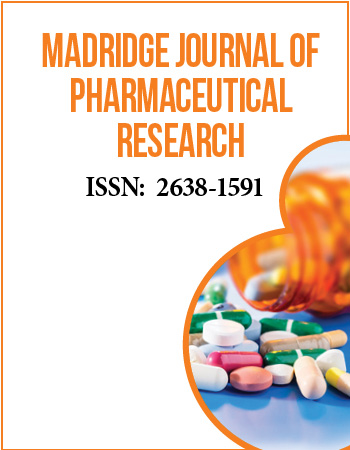2nd International Conference on Pharma & Nutrition, Health and Aging
August 1-2, 2019 Valencia, Spain
Synthesis, In vitro and In vivo Pharmacological Evaluation of Serotoninergic Ligands containing Isonicotinic and Picolinic Nuclei
1Department of Pharmacy, University of Naples Federico II, Italy
2Department of Medical and Surgical Science and Neuroscience, University of Siena, Italy
3Department of Biochemistry, Medical University of Warsaw, Poland
4Department of Pharmacology and Pharmacodynamics, Medical University of Lublin, Poland
Serotonin an important neurotransmitter in the SNC and SNP has been implicated in numerous physiological and physiopathological processes. Serotonin receptors may be involved in the regulation of impulsivity and alcoholism in the different phases of sleep, sexual behavior, appetite control, thermoregulation, cardiovascular function and recently it has been found to show growth-promoting activity and to be functionally related to oncogenes. One of the most studied chemical classes already known for their high affinity toward these receptors is the long-chain aryl piperazines (LCAPs). In continuation of our research program, we designed a new set of derivatives where the piperazine-N-alkyl moiety has been linked to an isonicotinic or picolinic fragment as terminal part of LCAPs. The isonicotinic or picolinic scaffold was linked via two and three methylene spacing units to the N-4-aryl-substituted piperazines obtaining a complete structure-affinity and structure-selectivity relationship study. The multireceptor profile of new isonicotinic and picolinic derivatives towards 5-HT1A, 5-HT2A and 5-HT2C receptors were also evaluated in binding assays for dopaminergic and adrenergic receptors. We have disclosed interesting compounds as 5-HT1A, 5-HT2A and mixed 5-HT1A/5-HT2C ligands. Compounds showing better affinity and selectivity binding profile towards 5-HT2A receptors have been tested on rat ileus disclosing an inhibitory effect on serotonin-inducted contraction. These assays have allowed to verify the role that serotonin receptors can have in the gastrointestinal tract with a potential therapeutic profile as spasmolytic agents. Finally, derivatives with a better affinity/selectivity profile towards 5-HT1A have been evaluated by In vivo assay, to determine their functional activity.
Biography:
Dr. Magli graduated summa cum laude in Pharmacy at the University of Naples Federico II discussing a thesis entitled “Synthesis and pharmacological evaluation of Nʼ-cyanoisonicotinamidinic derivatives as serotoninergic ligands”. She earned her PhD on serotoninergic ligands synthesis and evaluation of their antitumor activity in 2011. From 2015 she held the position of researcher in Medicinal Chemistry at the University of Naples Federico II. Her research activity is addressed to the design, synthesis and characterization of small molecules active on different pharmacological targets with particular attention to Serotoninergic system.


